Kyrgyzstan is an anomaly. A former Soviet state located at the eastern end of Central Asia, it shares a border with China and inherited a strong communist legacy from its former rulers. A relatively small country, it has been independent only since 1991; the capital, Bishkek, still shows many of the signs of a former socialist state, and Lenin still stands guard over the city – albeit relegated to the rear of the State History Museum rather than the front.
Yet Kyrgyzstan is so much more than that. The country is more than 80% mountains, with the world’s second-largest saltwater lake, Issyk-Kul, at its heart. The people of Kyrgyzstan are proudly nomadic by heritage, and the old traditions are still practised in the mountains around the lake.
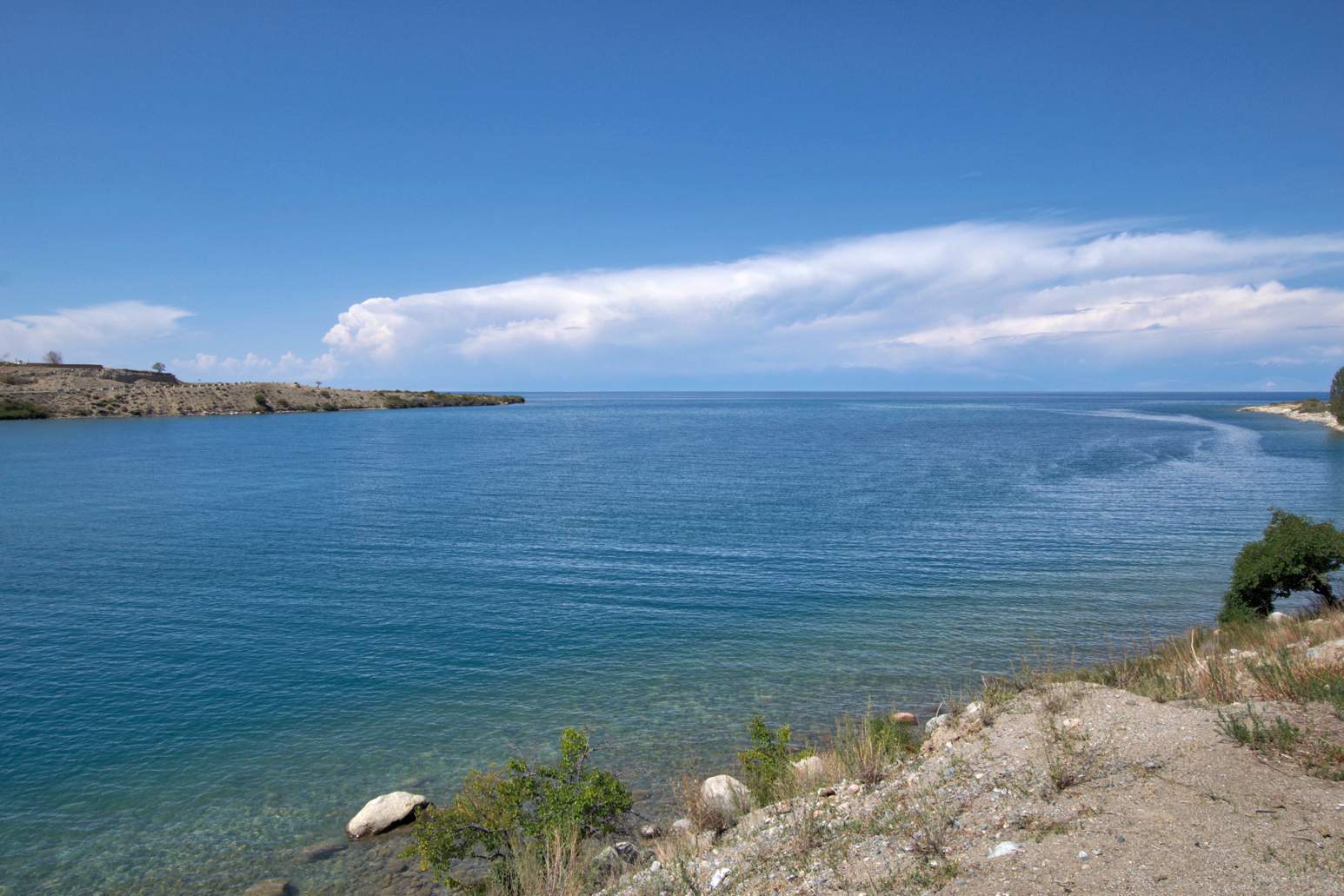
The nomadic tribe that we visited live to the southeast of Lake Issyk-Kul, in the mountains high above the city of Karakol. A leisurely day’s drive from the capital (journey time is around 5½ hours for just short of 400km), the route took us through spectacular Boom Gorge before following a well-maintained but narrow road around the south of the lake. The waters on our left-hand side sparkled in the sunshine, and pretty bays dotted the landscape. Facilities for travellers are few, but the road took us through small villages and there were many ideal picnic spots along the way.
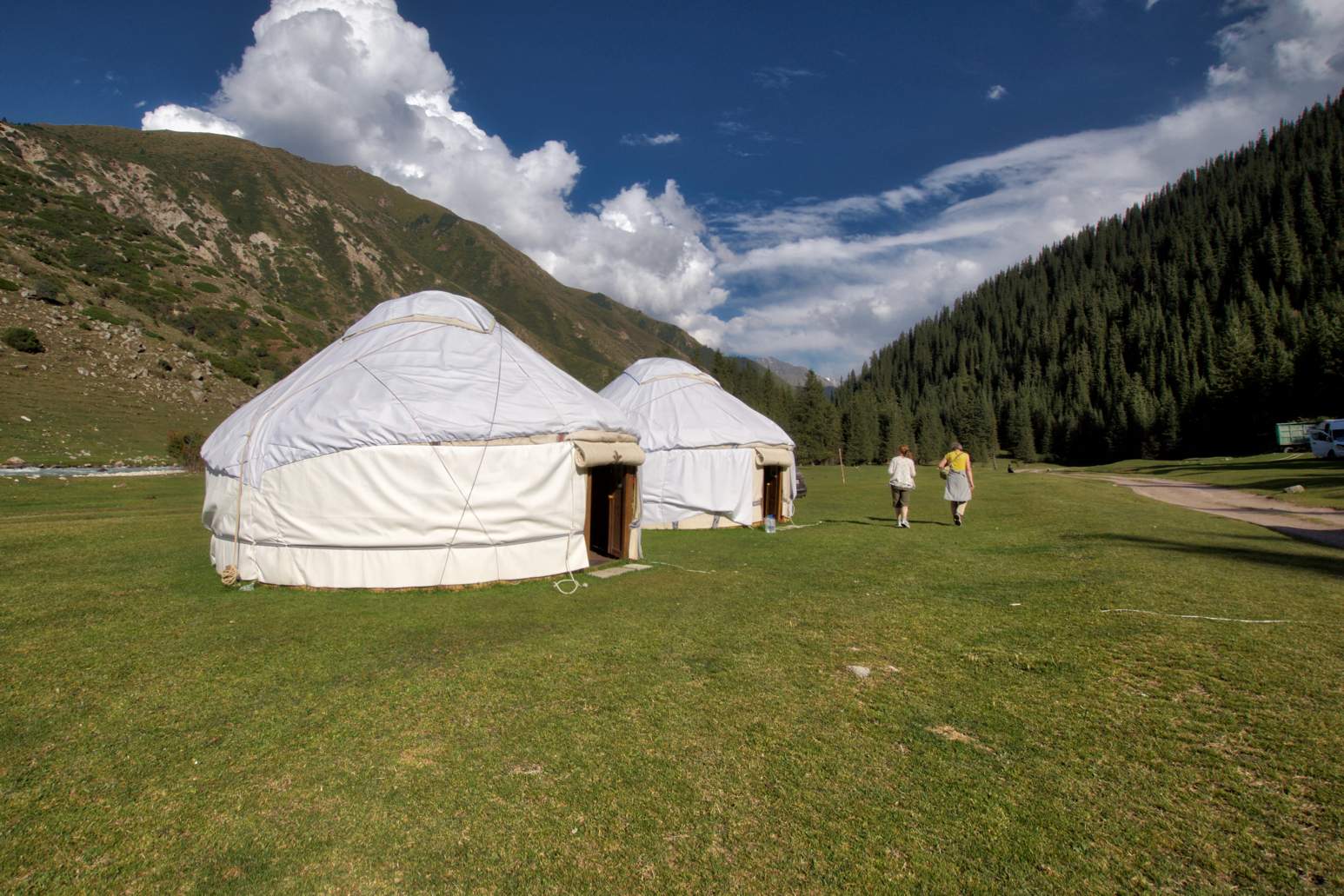
Turning off the main road near our destination, we began to climb higher into the mountains. We were met at a small settlement by the nomads who were hosting us, where we transferred from our bus into smaller vehicles better able to make the climb to the mountain camp. Upwinding roads, through narrow passes and past spectacular vistas, we eventually arrived at our home for the night, where several large yurts were ready in welcome. The spot was idyllic; located alongside a small river, mountains towered in front and behind our camp, and the nomads’ horses grazed peacefully all around us. Beautiful, sturdy animals who were clearly well cared-for, the horses seemed almost oblivious to our presence as they grazed.
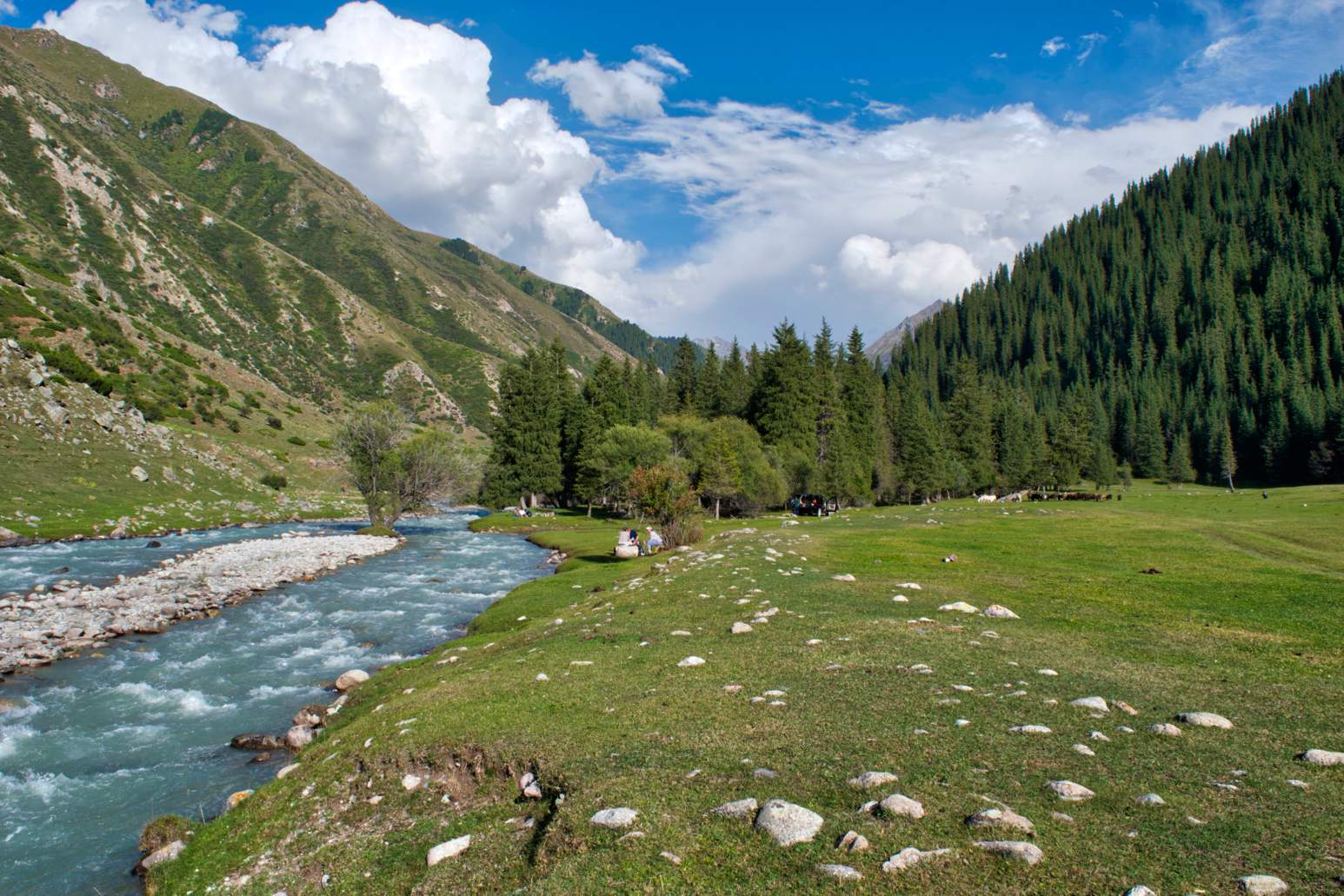
The late afternoon was spent relaxing by the river, although horse-riding is also available for those with the skills to manage these highly-trained animals. For me, settling down on the grass beside the river with a good book was the perfect antidote to a day of driving. As the sun started to set behind the mountains, the feeling of peace was worth every mile we had travelled.
Our bedrooms for the night were divided by gender, five to a yurt. So much more than a simple tent, yurts are designed to be dismantled and relocated as the nomads move between pastures. Formed of a wooden structure covered by felt and canvas, beautifully but simply decorated, our yurt was basic but comfortable, and thick woollen mattresses and comforters were laid out for each visitor. Washing facilities were basic; semi-permanent wooden huts housed sit-down toilets, and the sink was outdoors. Generators provided electricity where needed, but overall the living was simple.
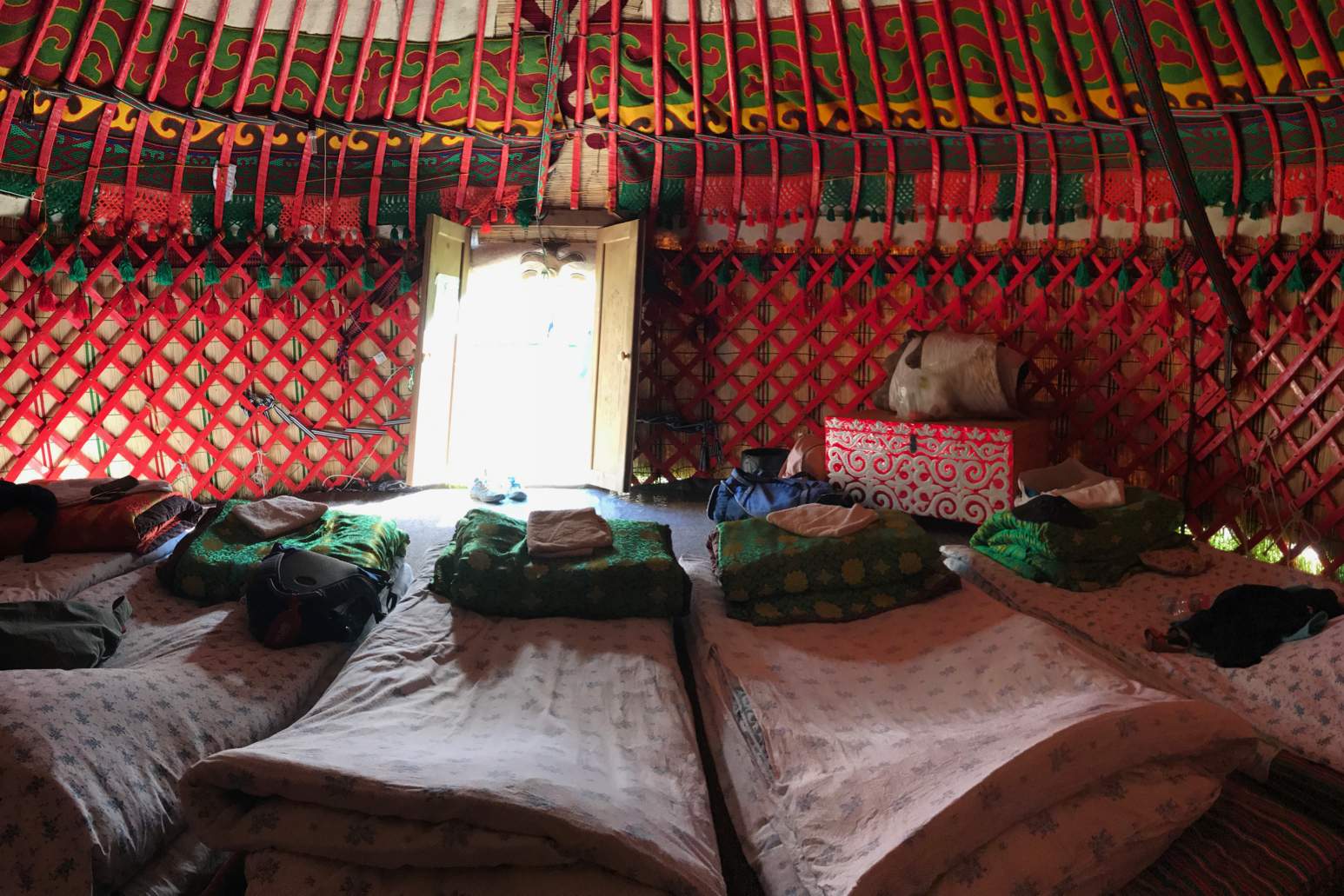
One larger yurt served as the dining room, where we were served a simple but tasty dinner and breakfast – complete with bowls of candy. A low, curved table wrapped most of the way around the room, with visitors sitting cross-legged on cushions on either side. In grand camping tradition, we ate and drank and chatted, but went to bed early, the darkness outside the yurt slowing our body clocks down earlier than normal. The cosy beds in our yurts were also a major draw. We were lucky; the summer night was mild when we visited in August, although weather can be variable and had been much colder two weeks earlier. Layers are a must-have, although the yurts and bedding are more than adequate.
A comfortable night’s sleep later (despite the adventure of a moonlight walk to the toilet huts!), we arose, breakfasted and set off to visit the mountain pasture. A half-hour walk up the hillside brought us to a camp where local families lived tourist-free, and we could watch them as they went about their day, staring curiously at us from atop their horses. The skill of these nomads is incredible; having never mastered horse-riding myself, to see them so at home on horseback was awe-inspiring.
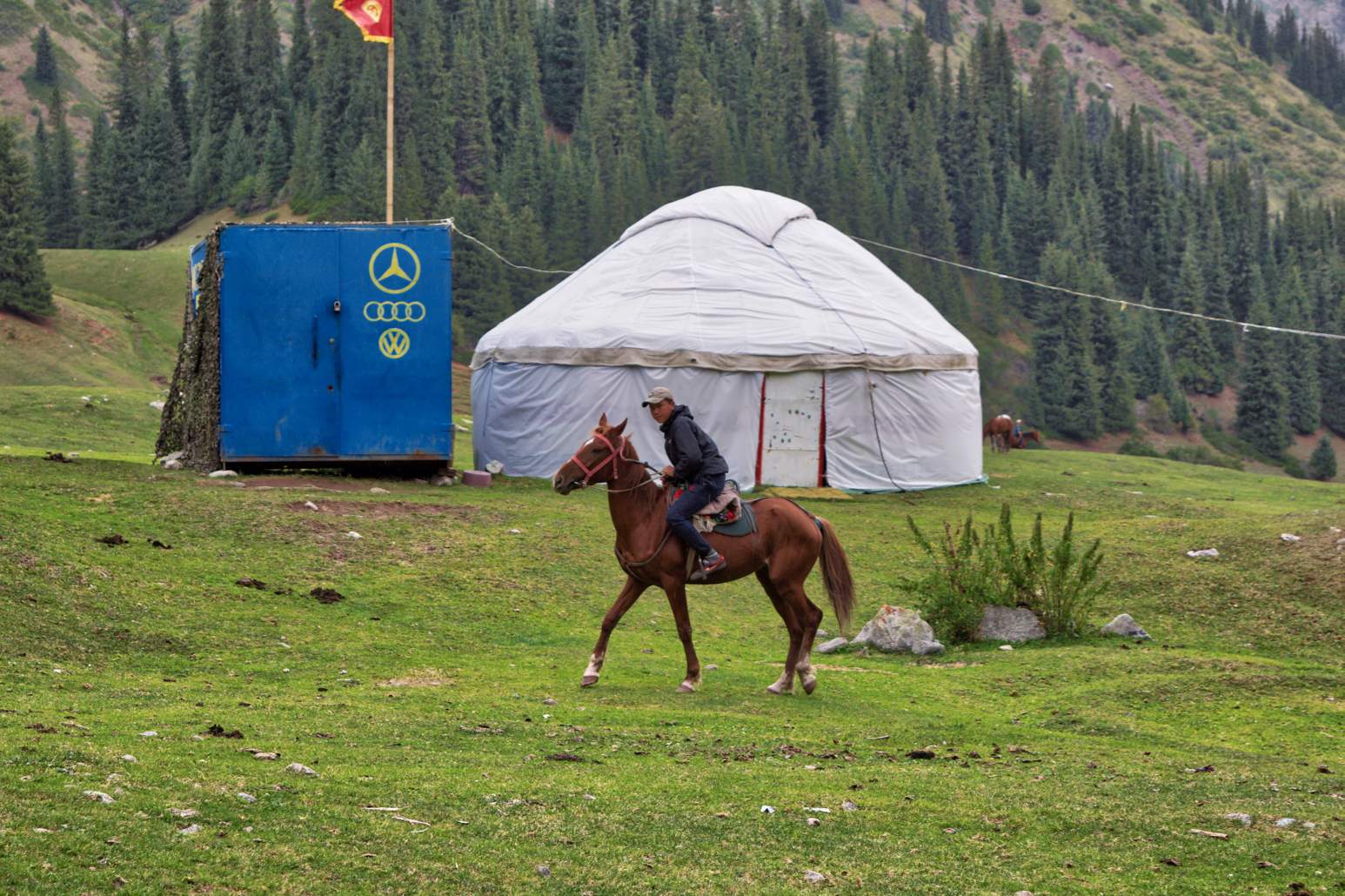
All good things come to an end, and soon it was time to set off on the road again towards our day’s destination, Karakol. But there was one last stop on the way; we had arranged to meet an eagle hunter. We rendezvoused on the roadside, the eagle hunter pulling up in his modern car only to emerge in national dress, with the eagle on a perch in the trunk. Eagle-hunting these days is a dying art; hunting for food still takes place, but tourism is the biggest earner. Inauthentic? Possibly, but the hunter we met was passionate about keeping his heritage alive in this way. He was accompanied by his assistant, a young boy of about 10 years old who was the son of a neighbour. The boy dreams of being an eagle hunter himself one day.
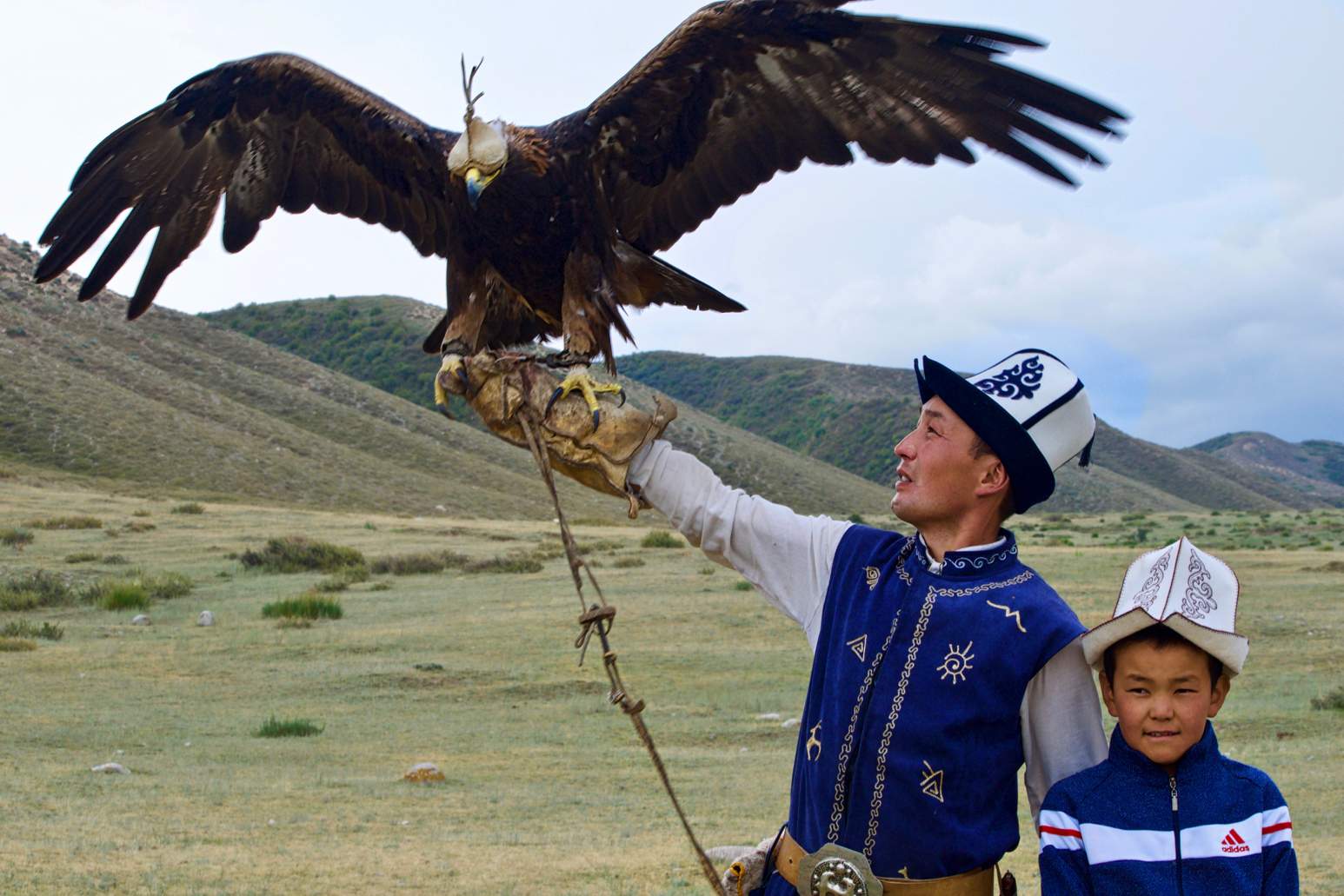
We had the option for the hunting demonstration of seeing the eagle hunt and kill a live animal or watching a demonstration using a fur replacement. We chose the more humane option, although this is hunting in its most natural form, with the bird making its kill quickly and swiftly. Hunting is not a sport, they hunt to live. Still, as a vegetarian myself, I was not keen to have an animal killed for my sake; and the demonstration was still awe-inspiring, the great bird swooping down from the hilltop in a heartbeat with breathtaking precision as it “killed” its prey. Later, after it had been rewarded with a chunk of meat, we were able to take turns holding it on a thick leather gauntlet. Being so incredibly close to this massive bird of prey was an experience I will not easily forget.
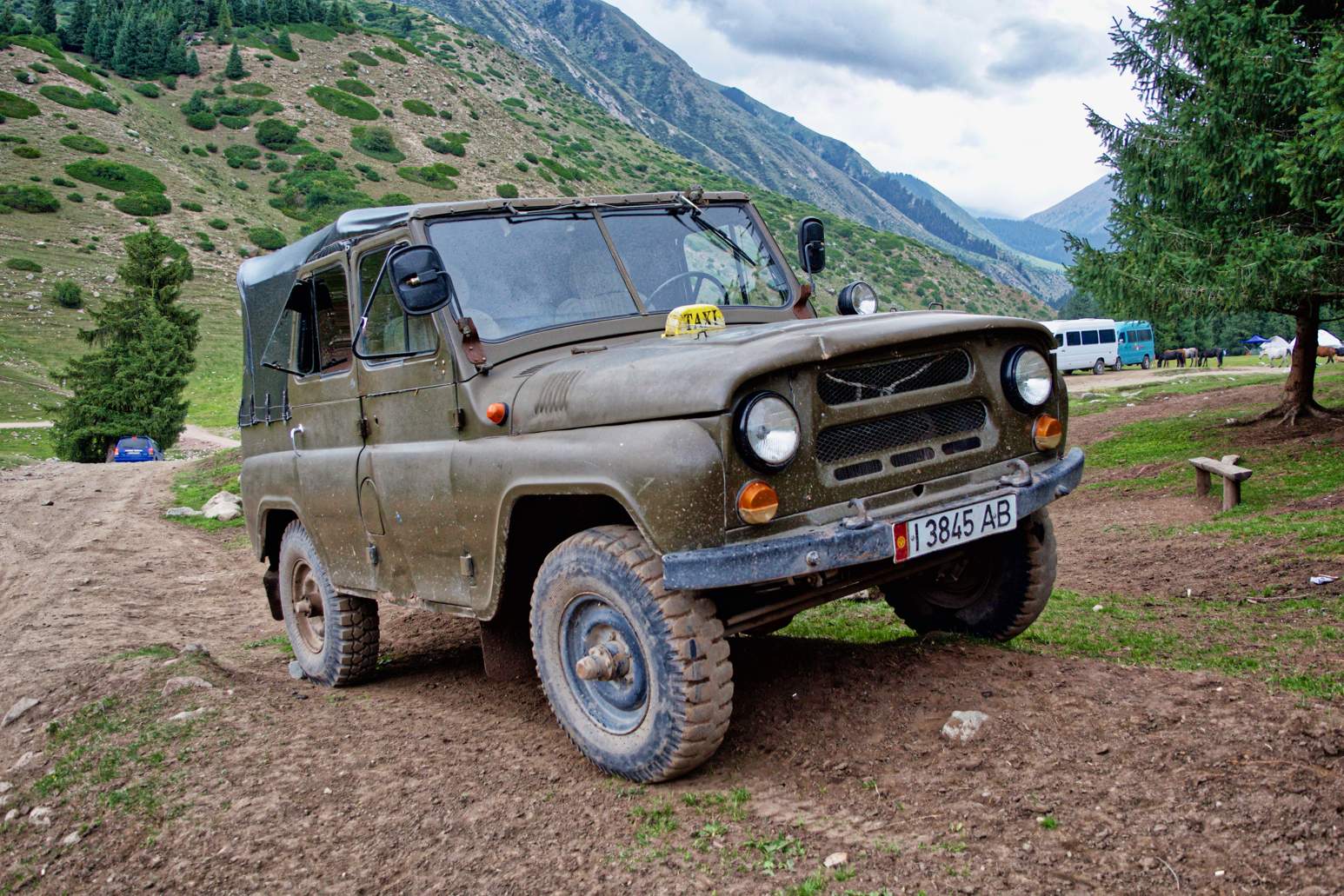
My trip to the mountain nomads was organised through Ak-Sai Travel via Exodus Travels (not sponsored), but there are many other options available. Consider a loop of several days right around Issyk-Kul, stopping off in the post-communist city of Karakol before heading to Cholpon-Ata on the north shore, where plush resorts abound, and views across the lake to the mountains beyond are spectacular. Ancient petroglyphs have been found close to Cholpon-Ata, and the lake is beautifully clear and perfect for swimming and watersports. There is so much to do in Kyrgyzstan, but the mountain nomads are perhaps the most fascinating destination of all.
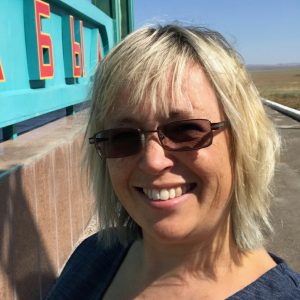
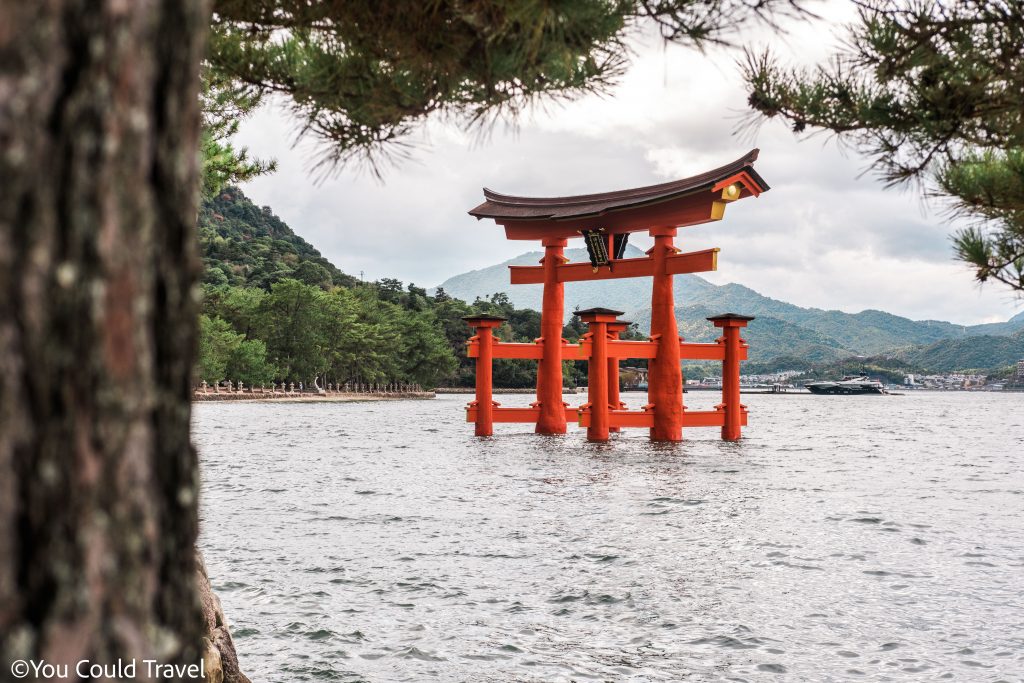
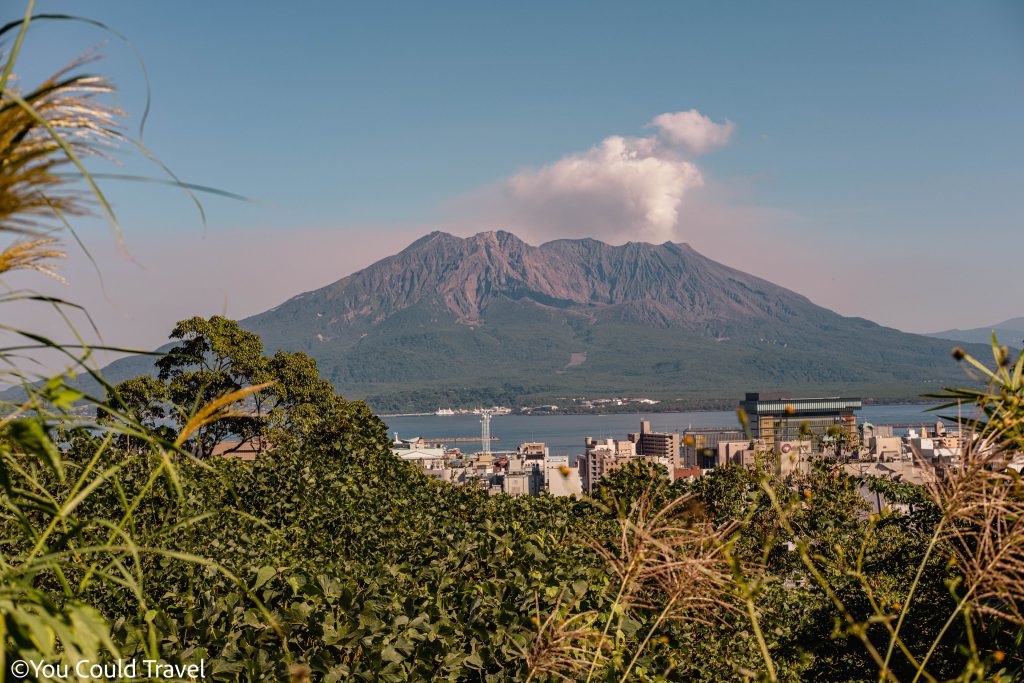
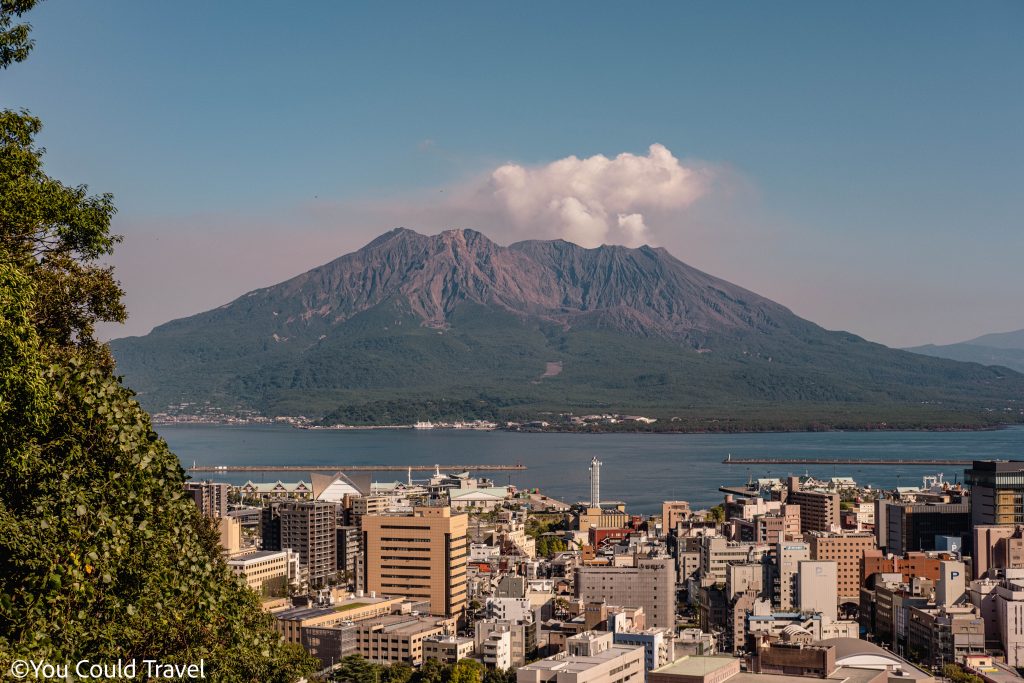
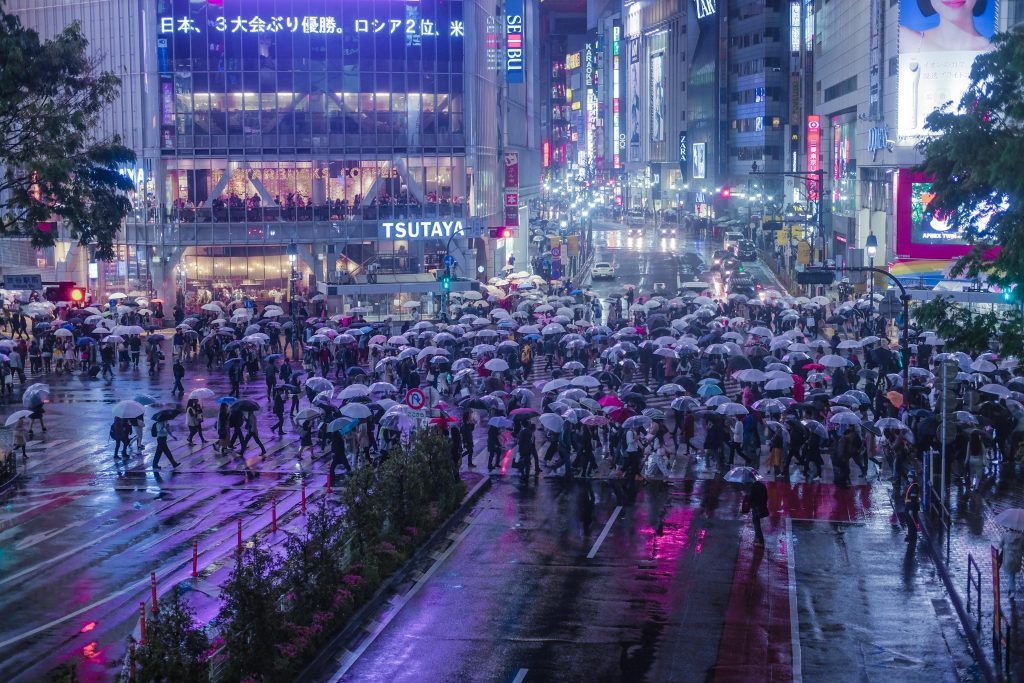
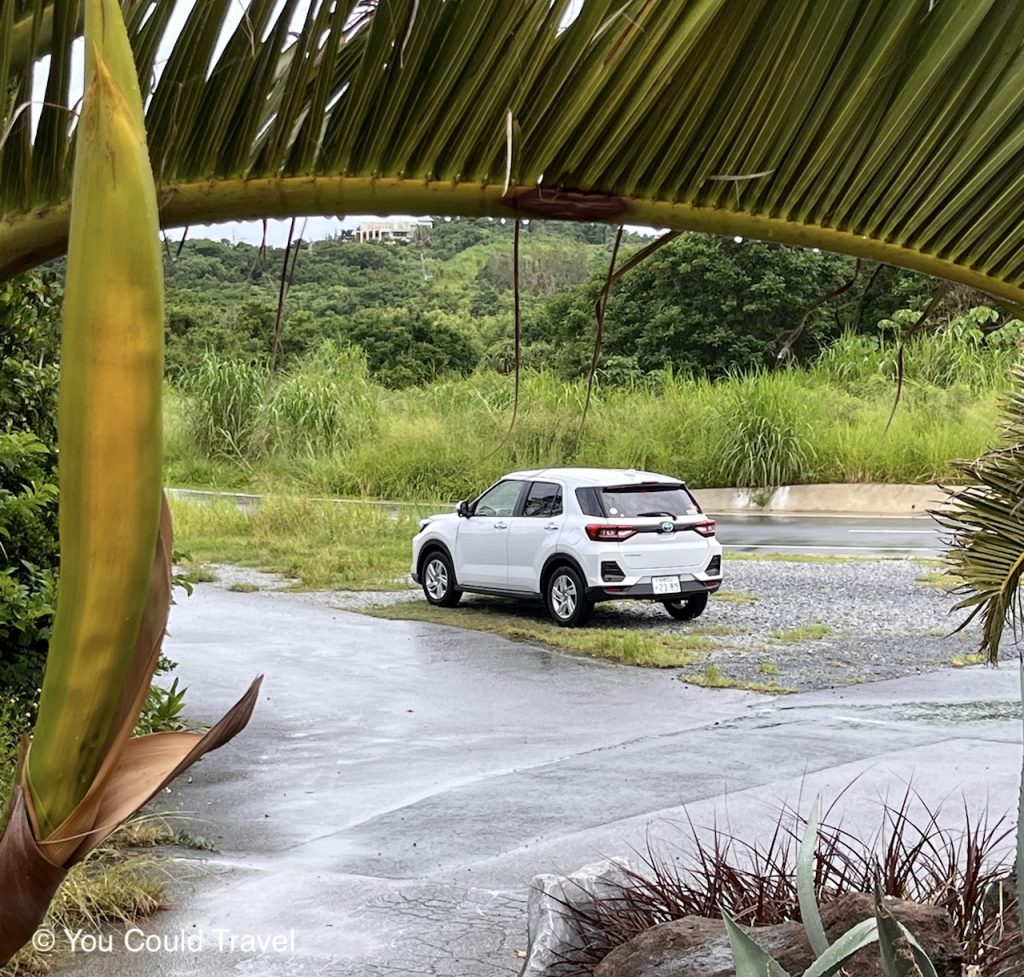



Leave a Reply